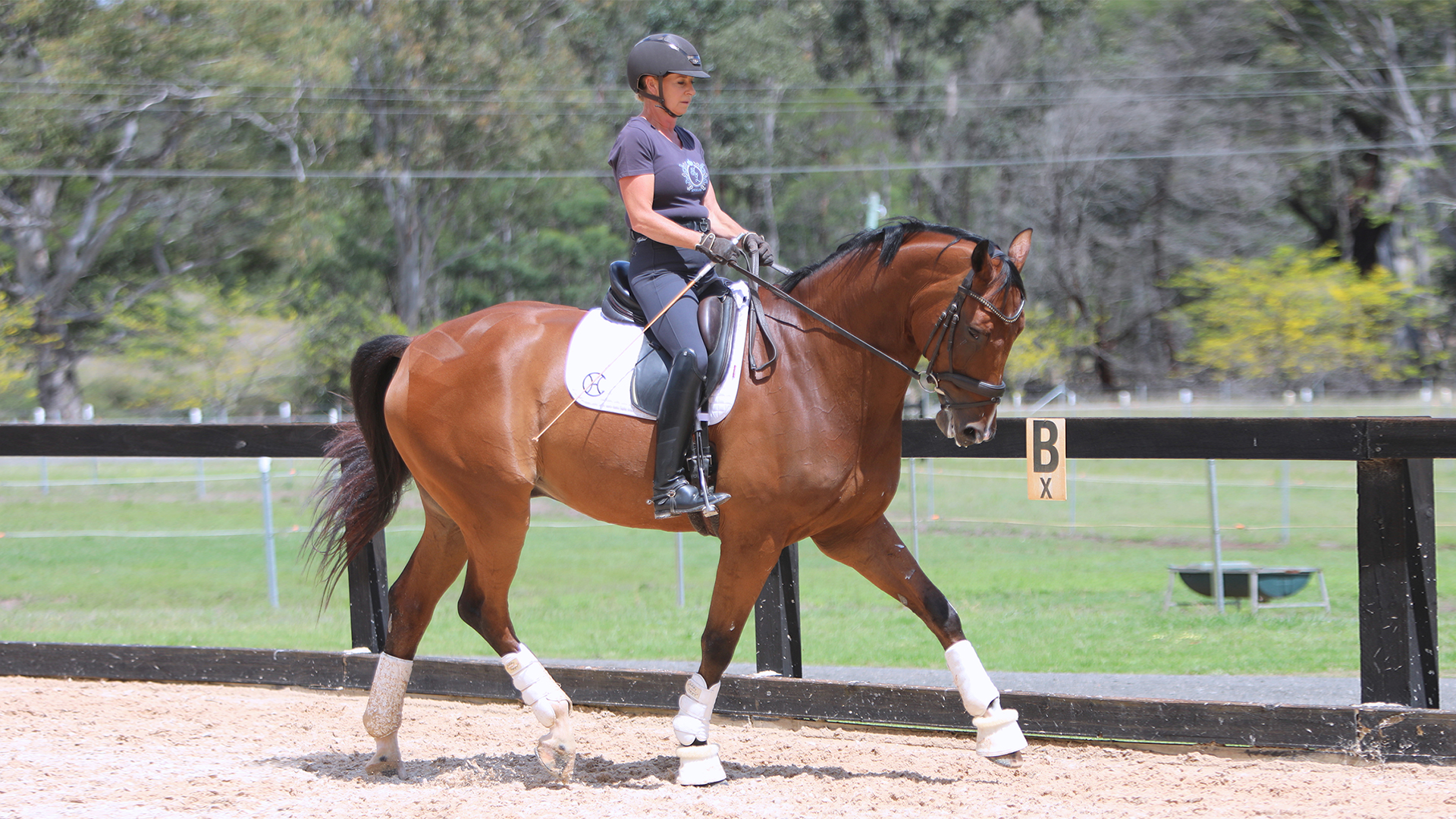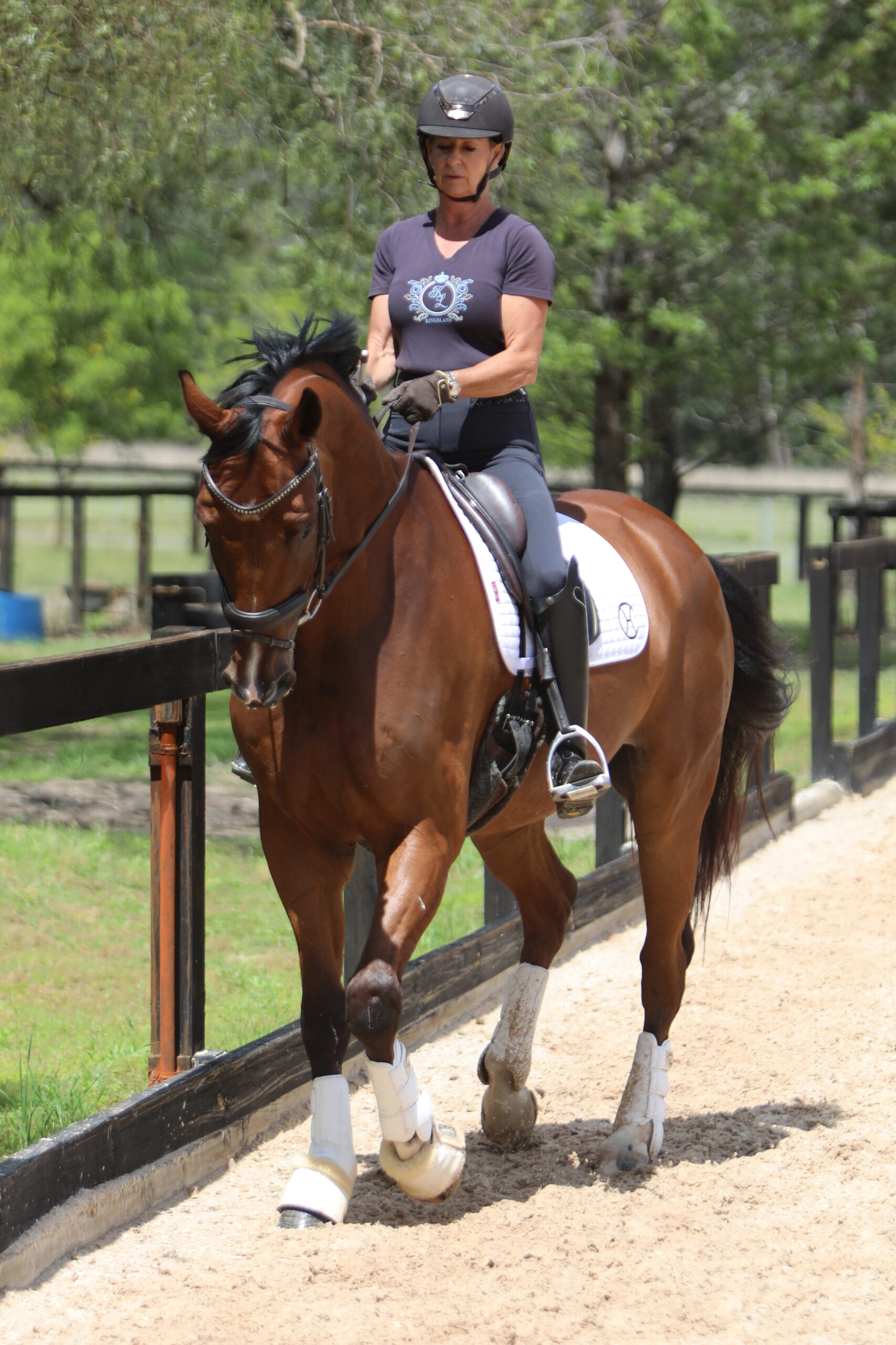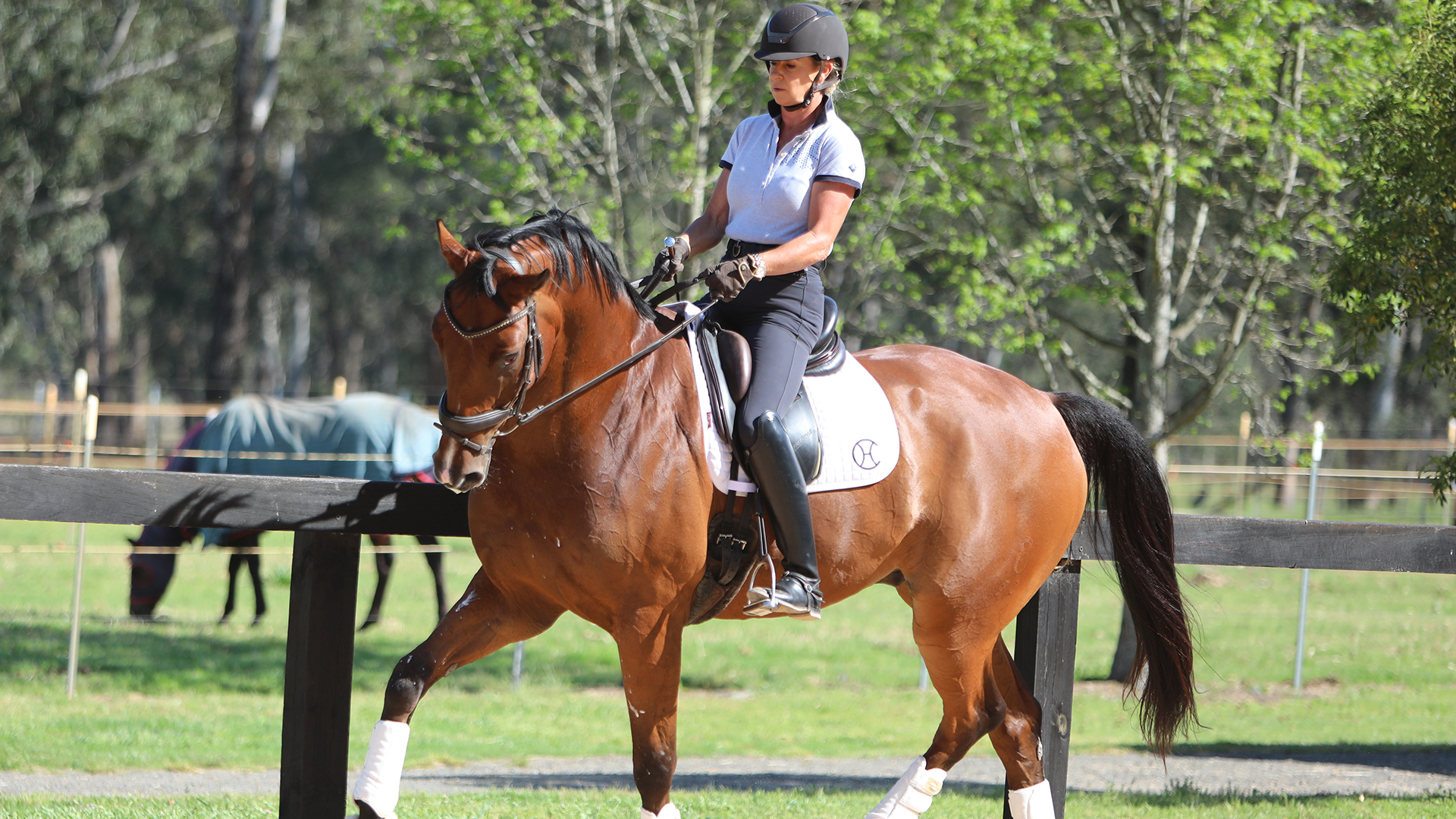In the previous issue of Equestrian Life, I looked at riding the shoulder-in as part of my ongoing series on training lateral work. Here we look at another movement that’s introduced at Elementary level — travers.
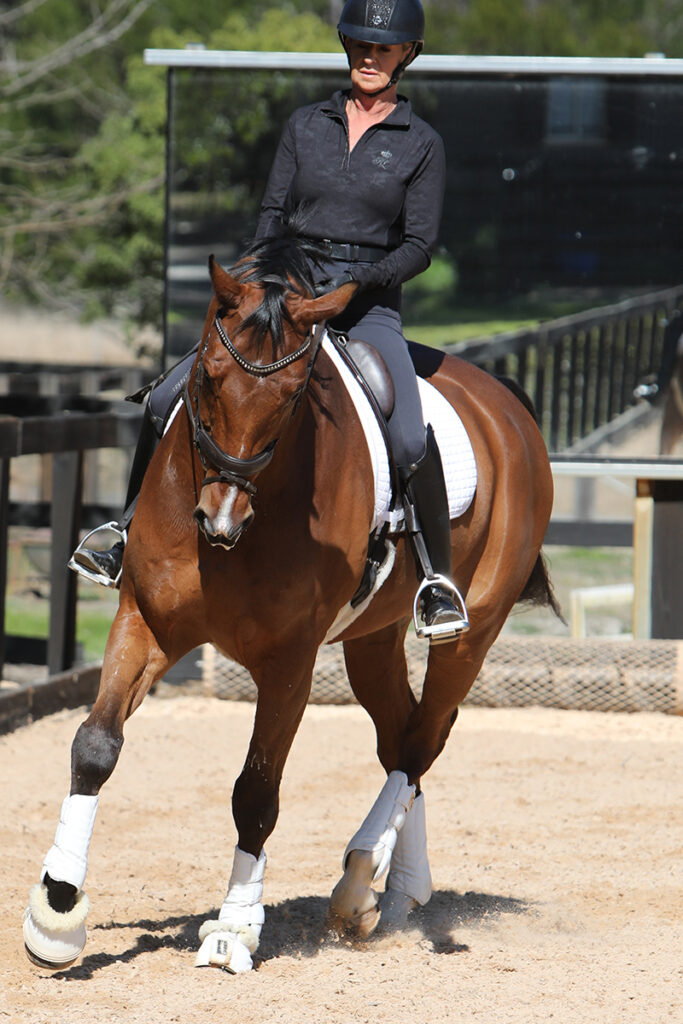
The travers is positioned as if a still photo is taken as the horse comes out of a corner or off a circle. Image by Roger Fitzhardinge.
Travers is an exercise where the horse learns about carrying the weight more on the outside hind leg. It is the first of the exercises where the horse bends and flexes in the direction of movement of the horse, unlike the previous exercises — turn on the forehand, leg-yield and shoulder-in — where the horse bends and flexes and moves away from the direction of the movement. Travers is essentially the precursor to higher-level movements such as the half-pass and pirouette.
As soon as the shoulder-in is started and a good grasp of it left and right is established, you must move to the travers. Sometimes, if too much time is spent totally establishing the leg-yield and the shoulder-in, then the horse starts to believe that he always goes sideways away from the bend, and when it’s time to say “now move into the direction of the bend” they can become quite difficult about this. So as soon as you teach the shoulder-in, it should then be straight into the work in travers.
The FEI definition for travers is as follows…
Travers can be performed in collected trot or collected canter. The horse is slightly bent round the inside leg of the athlete but with a greater degree of bend than in shoulder-in. A constant angle of approximately thirty-five degrees should be shown (from the front and from behind one sees four tracks). The forehand remains on the track and the quarters are moved inwards. The horse’s outside legs pass and cross in front of the inside legs. The horse is bent in the direction in which it is moving.
To start the travers, the quarters must leave the track or, after a corner or circle, are not brought back onto the track. At the end of the travers, the quarters are brought back on the track (without any counter-flexion of the poll/neck) as one would finish a circle.
The travers, as was explained in the shoulder-in article, is positioned as if a still photo is taken as the horse comes out of a corner or off a circle. The last stride as the front leg hits the track is then taken down the track with an inside bend and on four tracks.
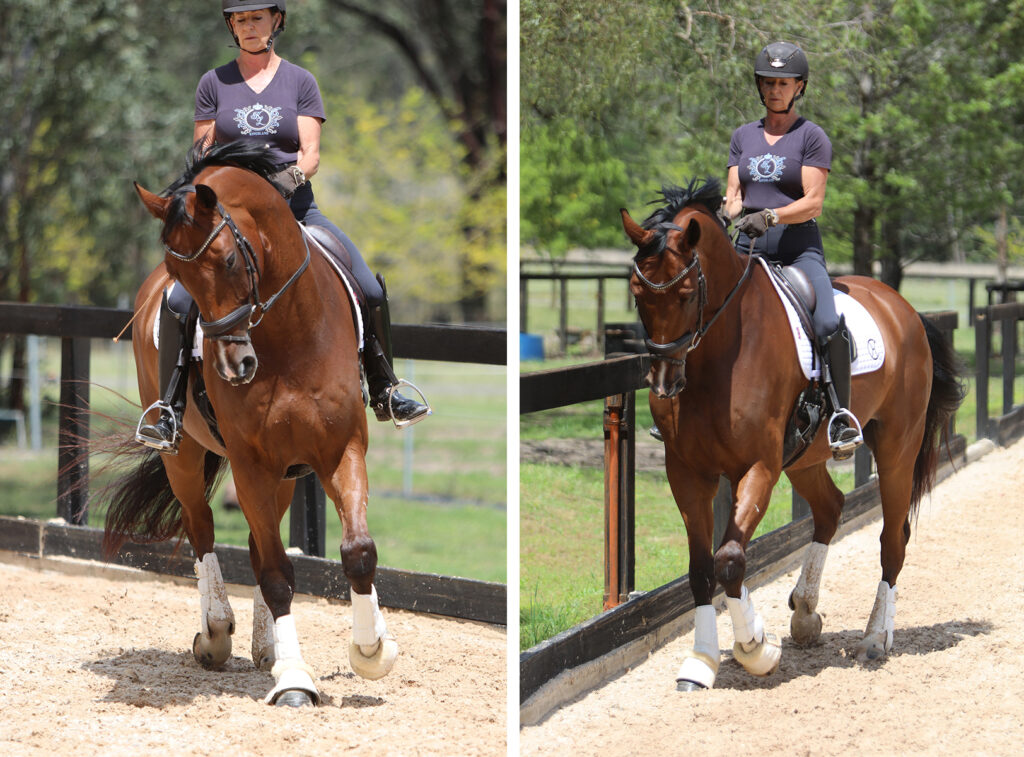
It’s important to be able to adjust the flexion; in this exercise the horse is moving down the long side in right flexion. Image 2: The horse continues down the long side, but a change in flexion to the left – we now have travers! Images by Roger Fitzhardinge.
“It’s important to teach
the horse to move off the
outside leg first.”
Start by making a 10 metre circle and preparing the horse for the travers by keeping the bend and flexion, and a few steps before arriving at the track start to feel your outside leg a little further back and encouraging to keep the outside hind leg in. As you arrive with the shoulders at the track, indicate with the inside rein to keep the flexion and the outside leg to maintain the quarters. The usual problem is that the horse wants to finish the circle and not move in with the maintained bend. If this is the case, then it’s important to move him off that outside leg even if you lose the bend. Make the exercise with an as-straight-as-possible neck and keep him lively off the outside leg.
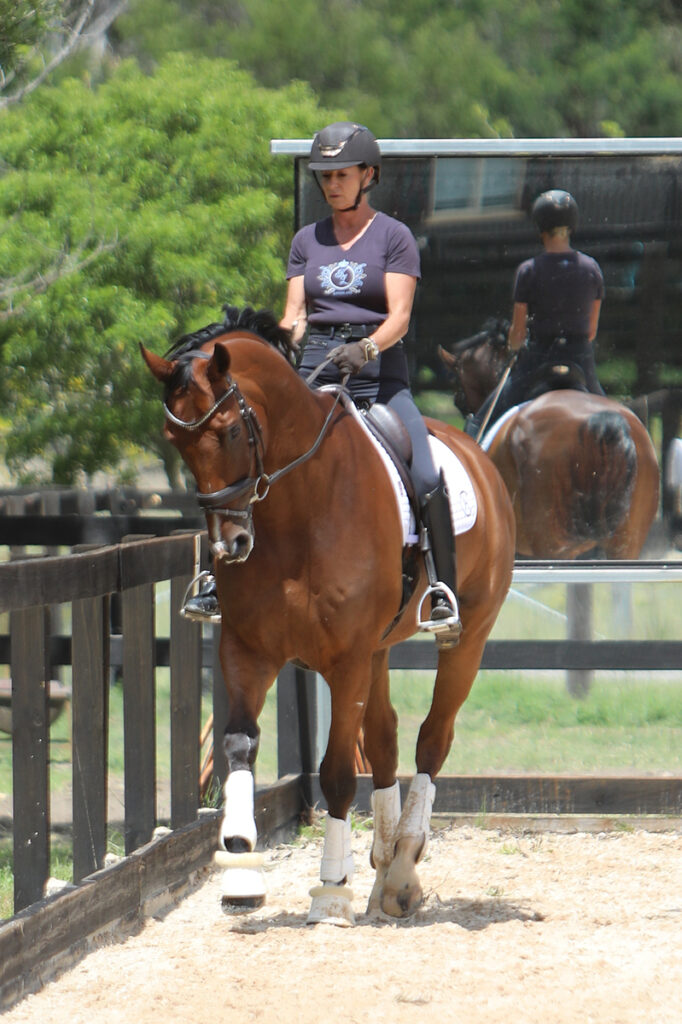
Travers on the circle in trot. Image by Roger Fitzhardinge.
When you feel he is receptive to this, then go to a large circle. Maintain a lively, sensitive trot with the horse bent on the line. Try a few steps of shoulder-in and this will get the horse flexed and well into the outside rein. Then bring the outside leg back and try to move the quarters in, or at least stabilise them as you open the outside rein a little to move the forehand out, and the inside rein up a little and close to the neck to keep the flexion. Focus a little on keeping the forehand out, not just the quarters in. Just maintain this for a few strides and go back on the circle and repeat, trying to maintain the suppleness to the inside.
Another excellent way to get to the travers is to trot down the quarter line and leg-yield slowly to the wall, but allow the shoulder to lead and the quarters to trail a little. As you get to the track, if you halted in that position you would have the travers angle. So, as you get to the track in this forehand leading leg-yield, you keep the shoulders to the outside, on the wall, and invite the quarters to stay in with an outside leg aid behind the girth.
“It’s interesting to realise
that riders too often focus
on pushing the quarters in…”
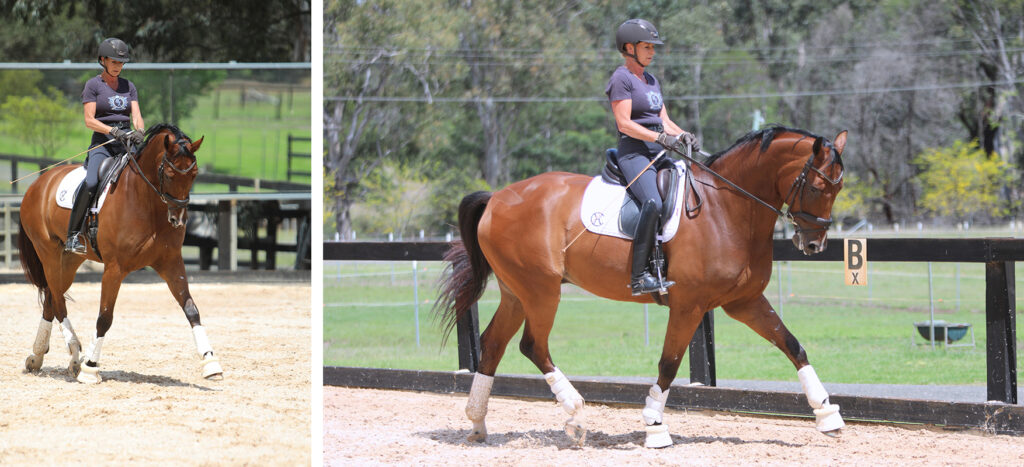
It’s interesting to realise that riders too often focus on pushing the quarters in. Focus more on keeping the shoulders out! It really helps as the travers exercise needs attention equally on the front and the back end of the horse.
Travers is ridden on the long sides in the tests at Elementary level and of course equally on left and right rein and only in the trot. The horse’s face should be parallel to the short end of the arena as if he looks straight down the track. In training the travers, is a great exercise to be ridden on the diagonal line once the travers on the long side is very well established, and this will be discussed in the half-pass article next issue.
The canter half-pass is a great exercise to keep the hind leg jumping and to help balance and engagement. Of course, the travers on the circle is a very good exercise for preparation for the canter pirouettes and improving balance and cadence. The walk travers is also a great exercise in keeping a good walk tempo and is a great exercise for the walk pirouettes.
Travers is a fabulous exercise and can be so useful in so many situations to help with straightness and balance.
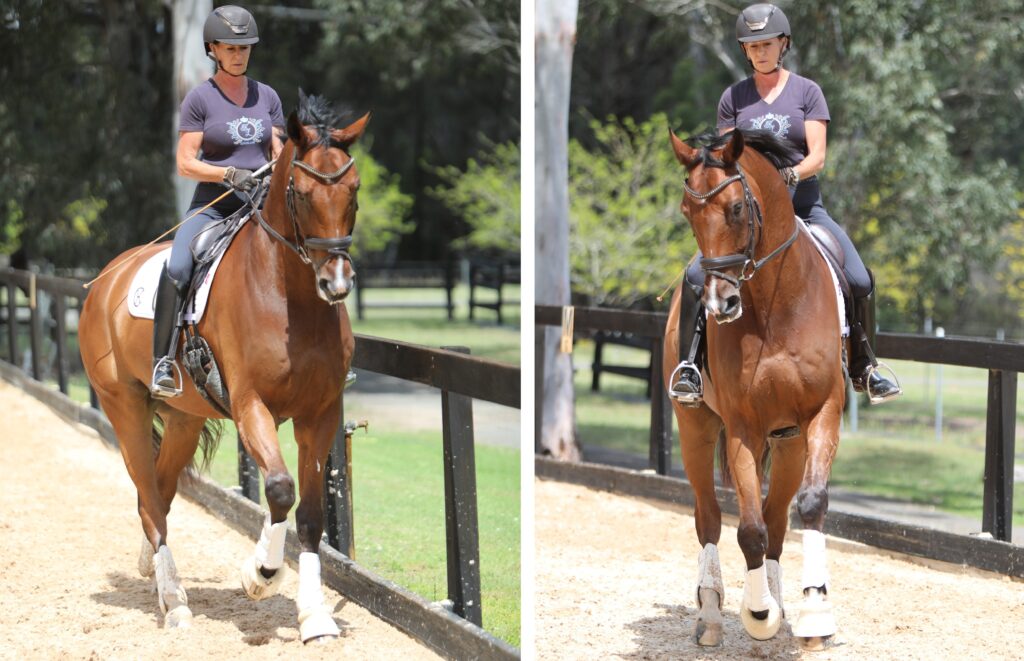
THE PITFALLS
Watch out for only flexion, and not enough angle — as well as too much angle causing stalling in the stride and lack of definite rhythm.
Coming above the bit and hollow should also be avoided; in the beginning it’s better to be a little deep in the frame, so as you get better strength over the back, enabling the weight to be taken on the outside hind.
Remember, in the footfalls of the canter the outside hind takes the weight of the whole horse momentarily and therefore needs to be in position to do so. Then comes the diagonal pair, and you need the weight towards the outside of the horse’s body at that time — and then the inside fore, which will be free to lift and move if the weight is over the outside hind and the bend is correct.
Enjoy this exercise, and between this and shoulder-in you will gain so much control, create carrying capacity and form confidence and balance and your horse will become stronger for better self-carriage and ease. EQ
